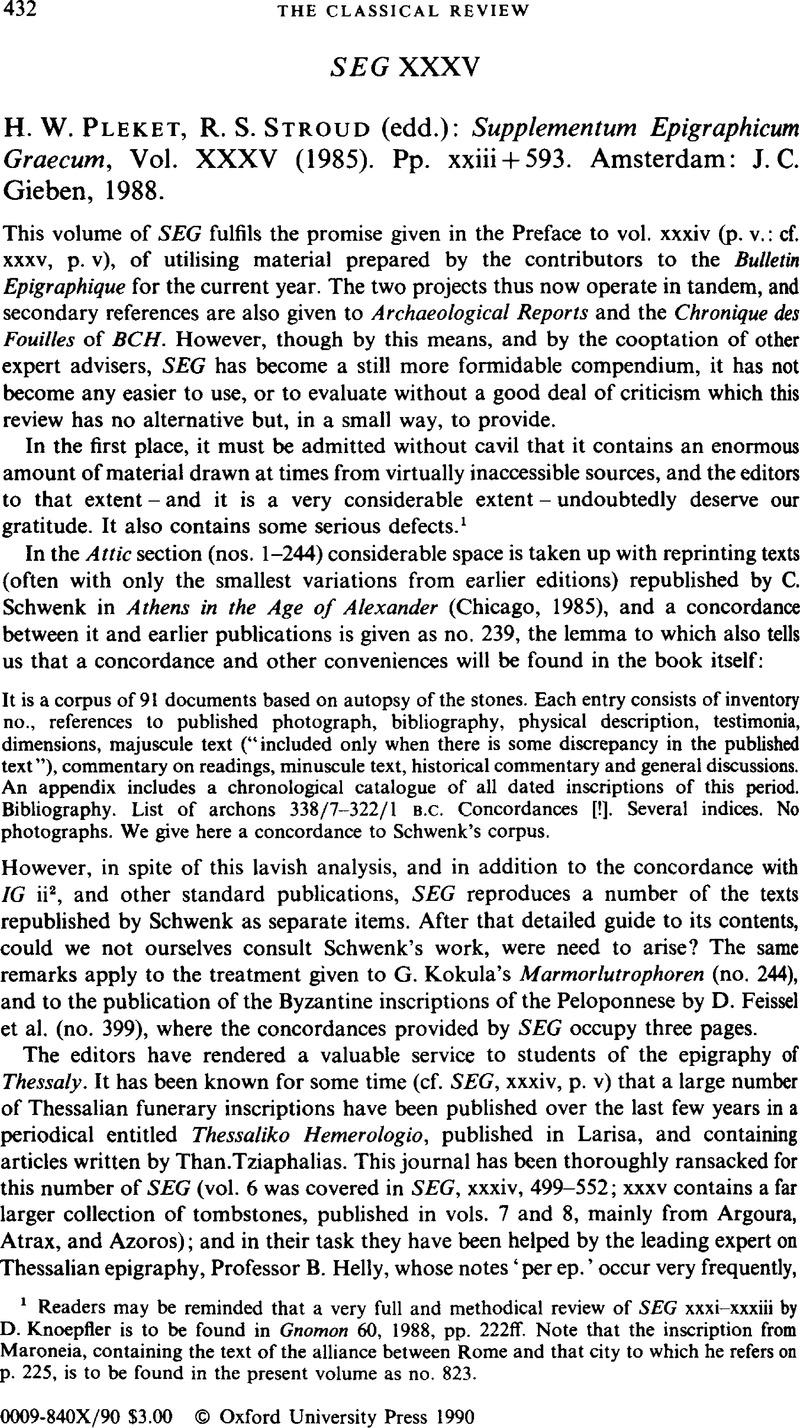No CrossRef data available.
Article contents
Seg XXXV - H. W. Pleket, R. S. Stroud (edd.): Supplementum Epigraphicum Graecum, Vol. XXXV (1985). Pp. xxiii + 593. Amsterdam: J. C. Gieben, 1988.
Published online by Cambridge University Press: 16 February 2009
Abstract

- Type
- Reviews
- Information
- Copyright
- Copyright © The Classical Association 1990
References
1 Readers may be reminded that a very full and methodical review of Seg xxxi–xxxiii by D. Knoepfler is to be found in Gnomon 60, 1988, pp. 222ff. Note that the inscription from Maroneia, containing the text of the alliance between Rome and that city to which he refers on p. 225, is to be found in the present volume as no. 823.
2 The item also includes an example of the dangers to which the editors expose themselves by their anxiety to include every piece of information they can: the lemma to this item is built in part round an article by J. Noret in Anal. Boll. 104 (1986), 445ff.; but in the final note D. Feissel is quoted as providing a reference to this article, as if it had not been mentioned in the lemma, and then the situation is saved by a final square bracket in which we are told that this is indeed the article from which we started.
3 Note 1767, a summary of three pages of a book on the Senatorial Order, which itself contains ‘a wealth of information accessible by long indices of persons (795–940) and places/areas (941–972)’; 1775, a two-page summary of Habicht's book on Pausanias; and 1780, two more pages of summary, this time of articles on graffiti on coins; another series of such monstra is 1797–1801; cf. also 1832.
4 One more suggestion. The editors are scrupulous in recording all the suggestions made by their collaborators, and one would like to know on what basis on each occasion these suggestions are made. There is a difference between a suggestion made by a scholar who has seen the evidence in some form (object, photograph, squeeze) and conjecture based simply on the printed text. It is only Professor Stroud who tells us the source of his own suggestions (nos. 291, 318, 371–2, corrections from photographs).


